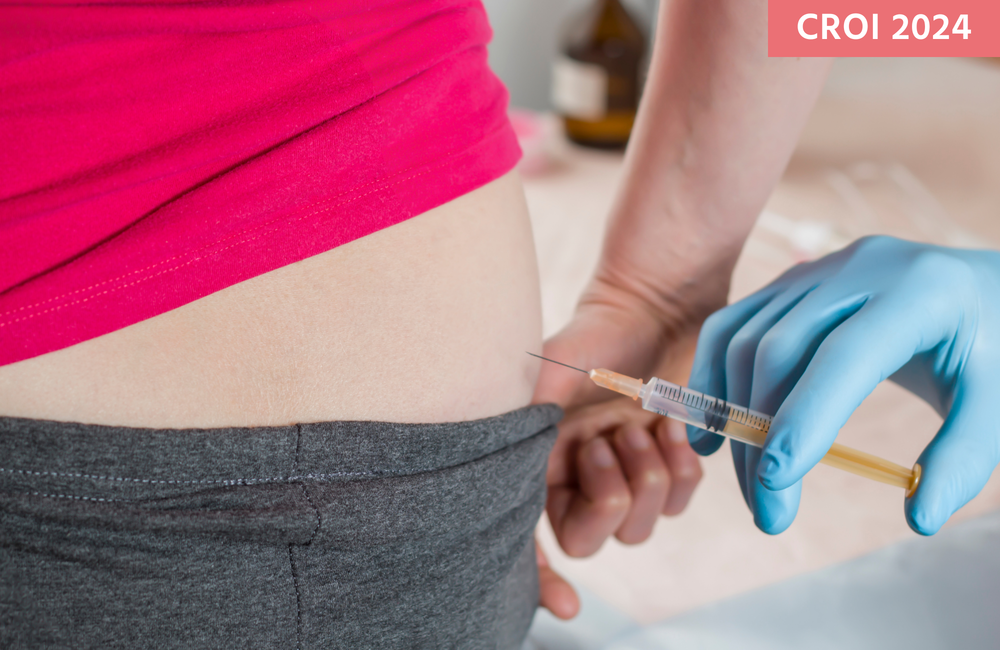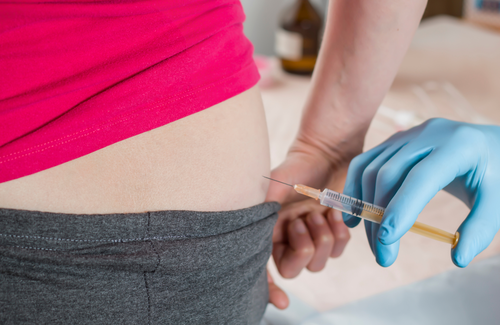
A symposium at the Conference on Retroviruses and Opportunistic Infections (CROI 2024) earlier this month included presentations advocating changes in practice on what might be called opposite ends of the menu of PrEP options now on offer.
Dr Rupa Patel, who works for the US Centers for Disease Control and Prevention and is also PrEP Medical Advisor for Washington DC’s Whitman Walker Clinic, questioned why the rollout of long-acting cabotegravir (CAB-LA) for injectable PrEP has been so slow, not only in the lower-income world, where programmes are only just starting, but in the USA, where multiple cost and bureaucratic issues are still only allowing a few of those who might want it to have it.
As aidsmap has already reported, in the same symposium, Dr Jenell Stewart argued that event-driven PrEP is demonstrably as effective as daily PrEP for gay men and trans women, and that there’s accumulating evidence that it could also work just as well for women and others who have vaginal sex.
Rupa Patel divided her talk into two sections. The first concerned the global rollout of CAB-LA in lower-income countries. Demonstration projects of CAB-LA have just started, but global access is not likely to gather great momentum till the three generic companies – Aurobindo, Cipla and Viatris, who signed a licence agreement a year ago with the Medicines Patent Pool and CAB-LA manufacturers ViiV – finish the process of World Health Organization prequalification required by national regulators and ViiV to authorise generic versions. This won’t happen till 2027.
The other half of her talk was concerned with the complex reimbursement and staffing requirements that were contributing to a significant delay in the rollout of injectable PrEP in the US, the country that first licensed it.
The long wait for injectable PrEP in lower-income settings
Globally, 6.2 million people have been prescribed PrEP in the last 12 years, since oral PrEP was first licensed by the US Food and Drug Administration, with the bulk of prescriptions – 1.4 million – filled in the last two years. (The number who have used it may surpass this as some countries, such as China, say they supply PrEP but do not give figures, while informal and private use still makes up a significant proportion of PrEP.)
It is now easier to state in which countries there has been no access to PrEP than the countries with PrEP programmes, even if in some places there are still only a few tens of users. Russia; almost all of the Middle East; a few central-African states such as Angola, Congo Republic and Gabon; and Bolivia, Venezuela and Nicaragua in the Americas are among the countries that still don’t have any official PrEP programmes.
Compared with these millions of users of oral PrEP, a few thousand people have just started to use injectable CAB-LA in the global South. The first adopter countries are Uganda and Kenya, where CAB-LA is now available as part of several demonstration projects including one highlighted at CROI 2024. Outside academically-backed demonstration projects, Malawi has just received 5400 doses and plans to start distribution by the end of this month. In the next month or two Zimbabwe and Zambia plan to start programmes and, outside Africa, 539 people have started in Brazil. By 2025 PEPFAR and the Global Fund aim to make 1.2 million doses of CAB-LA available (which would imply around 300,000 users) in countries including Vietnam, the Philippines and Ukraine as well as most of the high-prevalence countries of Africa.
Rupa Patel commented that this process is actually happening faster than it did for oral PrEP, where 3.5 years elapsed between the US Food and Drug Administration approving it in July 2012 and the next country, France, approving it in November 2015. In contrast it only took two years for seven African countries to approve CAB-LA after the FDA approved it in December 2021, ahead of the European Medicines Agency, which approved it last year.
Approval and demonstration projects, however, are not the primary issue when it comes to getting injectable PrEP to the people who could benefit. In a world where the US list price for CAB-LA branded as Apretude is around $22,000 a year, but PEPFAR’s projected price of $170 - $240 a year may still be too high for cost-effectiveness, putting high-volume generic manufacturing and distribution in place will be key.
Before generic versions of a drug can be marketed, manufacturers have to go through a process where they demonstrate that they have the technical ability to produce the drug to the same or equivalent standards as the branded version, with the same efficacy and side-effect profile (bioequivalence), and to the scale needed. They then have to submit a dossier for approval by national regulatory authorities and the World Health Organization. This is why, despite the technology transfer agreements negotiated with the pharmaceutical company ViiV, generic CAB-LA will probably not be available at until 2027.
Patel earned a round of applause when she said that the whole system for drugs like CAB-LA that had huge potential markets and impact in lower-income settings needed to be changed so that the framework for a generics market could be developed simultaneously with the process of licensing. “We must have parallel scientific discovery and regulatory efforts for earlier and shorter timelines for generic product access,” she said.
Multiple barriers to provision in the US
But even in the US, where CAB-LA is marketed as Apretude, it has been hard for injectable PrEP to establish a significant market . There have now been about 11,000 prescriptions in the two years since it was approved compared with an estimated 382,000 users of PrEP per year in the US, meaning CAB-LA is now accounting for about 1.4% of PrEP.
In the fragmented US healthcare system it is hard to get details of how many PrEP users there are locally. But an ad hoc survey of leading clinicians and data from posters presented at recent conferences, including CROI 2024, did not find any one clinic claiming to have more than 350 clients on CAB-LA, or any one clinic network with more than 560. The clinic reporting those 350 CAB-LA users is in Houston, Texas, with a clinic in Chicago in second place with 305 users and Patel’s own clinic in Washington DC in third place with 273.
There are surprising gaps in provision with very low numbers reported from cities one might think would be early adopters, including New York, Boston and San Francisco. No one clinic appears to have more than 5-7% of its PrEP users on Apretude. With so little data available, it’s even harder to get a clear picture of the demographic groups the first users belong to, and the inequities which probably exist.
There are several barriers to wider CAB-LA adoption, Patel said. One was cost. Most of the clinics with larger programmes had previously been sites of CAB-LA research studies whose clients had been receiving the medication for free. To ensure continuity of supply, the clinics had to transition to ‘buying and billing’ – they pay for the drugs in advance and only get the money back when users’ insurers reimburse it. Some sexual health clinics are more than $300,000 in debt due to delays in medical billing, and Apretude may represent a high proportion of that cost. It also makes expanding from 30 to 300 people on CAB-LA much harder than expanding from zero to 30.
The second barrier is the complex requirements for clients to get reimbursed at all. At present most insurers require proof that Apretude clients “failed on oral PrEP”. Furthermore, each prescription of an injection requires that insurance requirements are reprocessed – you can’t simply ask for a repeat.
Furthermore, up to 15% of people have reimbursement refused, but only the client is told, not the clinic. “This makes it hard to tell how many people we will get through the door,” Patel commented.
Thirdly, testing and appointment requirements also make it difficult to scale up the provision of CAB-LA. About 20% of clients fail to turn up for their next injection within the seven-day window allowed by insurers, and have to be re-started as a new patient. The complexities mean that some clinics are hiring workers whose entire job is to process CAB claims and chase absentees.
With testing, because of the ‘LEVI’ (Long-acting Early Viral Inhibition) syndrome, several assays and higher-specifications tests may be required to rule out HIV infection. However, “no one algorithm reliably identifies infections while minimising false positives,” Patel commented.
Finally, and maybe surprisingly to some, injectable PrEP, while reducing the potential for stigma among some people who have good reasons to conceal pills, may reinvoke feelings of stigmatisation among others. Having to return to a clinical setting and to answer more detailed enquiries about sexual behaviour has felt daunting to some users who had become used to receiving PrEP through relatively ‘hands off’ arrangements involving home testing and pharmacy dispensing.
Injectable PrEP needed to be “de-re-medicalised” said Patel. She mentioned with approval a scheme in Seattle where community medical assistants are being trained to provide the intramuscular injections. In Florida, the sexual health clinics have delegated the entire CAB-LA scheme to a pharmacy chain that will provide and administer it.
She also wondered if the provision of bimonthly injections aimed at improving sexual health might lend itself generally to better ‘syndemic management’. CAB-LA appointments could be combined with doxyxycline prescription for STIs and, when needed, ceftriaxone injections for gonorrhoea. Being able to combine it with injectable contraception has long been an aim in Africa: this may become possible if, as suggested by a recent study, newer CAB-LA formulations may allow injection every three to four months.
“For an innovative intervention like long-active cabotegravir”, she said, “it’s hard to start a programme. But it’s even harder to grow one.”
Patel RR. Why is cabotegravir rollout so slow? Conference on Retroviruses and Opportunistic Infections, Denver, presentation 48, 2024.
View the details of this presentation on the conference website.

